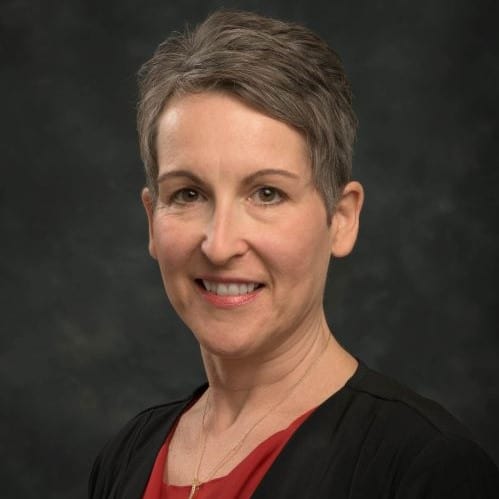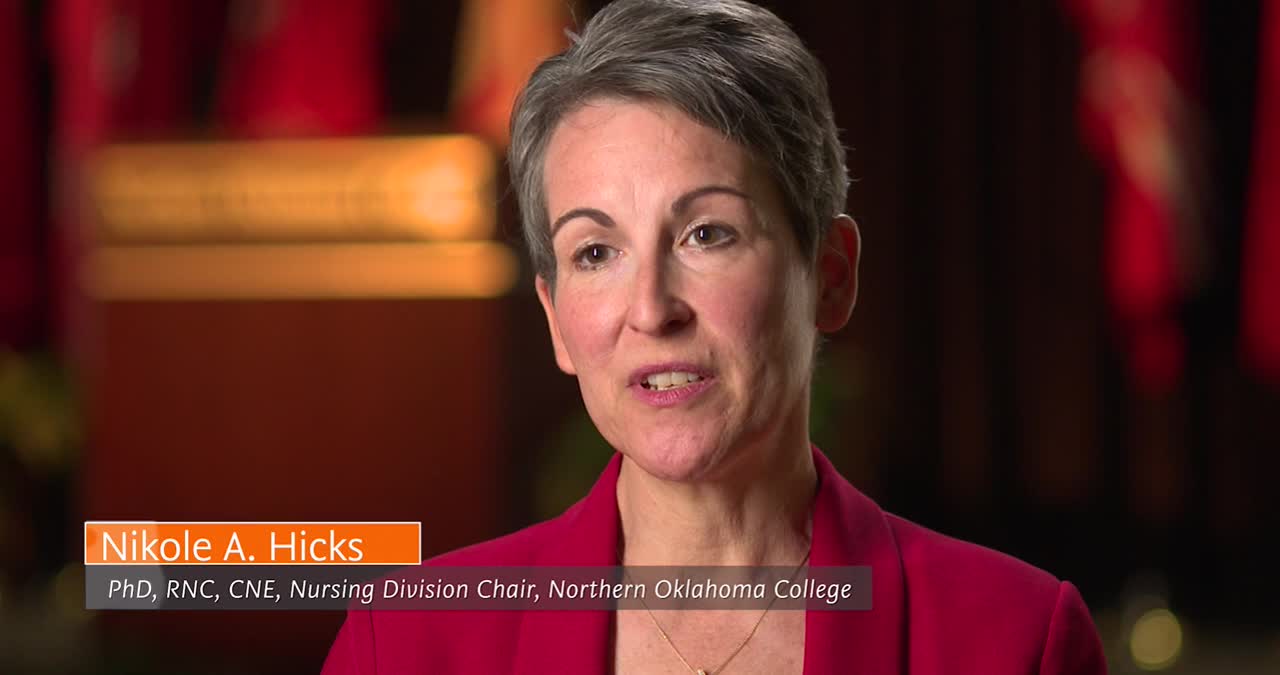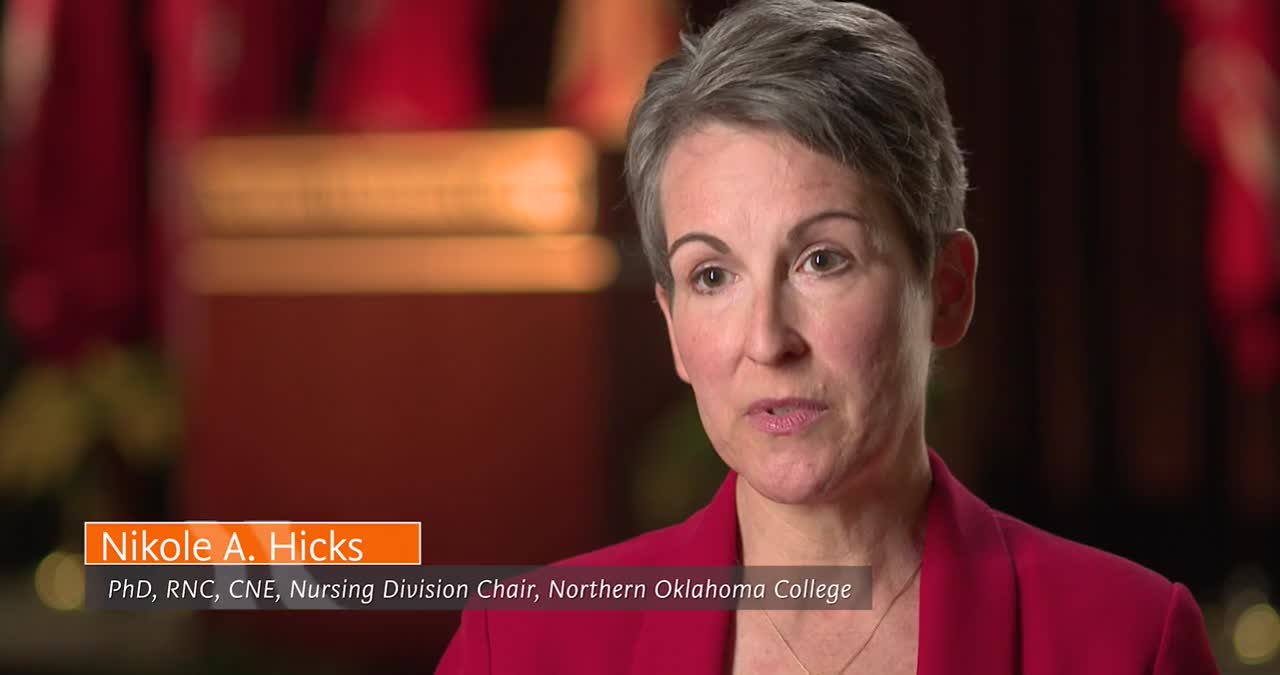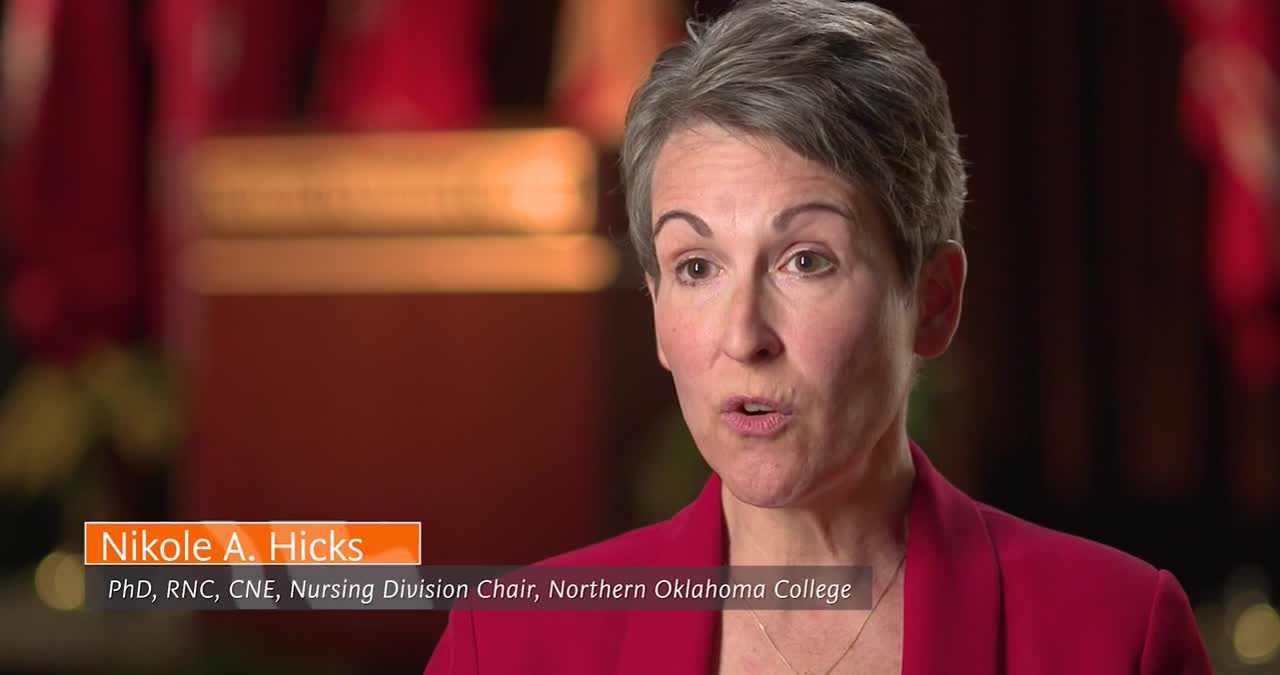
Providing students with the tools they need to succeed is a must for any program. Providing tools that allow faculty to track their progress over time to address weak areas puts nursing programs like the one at Northern Oklahoma College over the top and gives confidence to both students and faculty.
“For the most part, once faculty knew that they had support, they were on board and ready to move forward,” Dr. Nikole Hicks, Northern Oklahoma College Nursing Division Chair, says. “My role has been more in looking at the big picture.”
With Elsevier 360 for Nursing, digital learning resources that address knowledge mastery, clinical skills, and assessment results allows leadership like Dr. Hicks to align their curriculum better and work smarter toward program and student success.
Supporting Faculty Needs

With a longstanding history in nursing education and program leadership, Dr. Hicks noticed right away when she joined as division chair in the fall of 2020 that faculty were interested in bringing on more digital resources.
As an early adopter of online learning in nursing education back in 2000, she is familiar with the importance of the right resources. With the shift to online due to COVID-19, it seemed like a perfect opportunity for her nursing program at Northern Oklahoma College to explore a package with digital resources that would solve faculty needs and support program outcomes.
“This program was already integrating digital content. There are some champions within the faculty leadership that have hit the ground running with implementing Evolve Resources,” Nikole says. “They were already on board with Elsevier when I came, and I was able to provide the extra support for full integration [of Elsevier 360]’.”
Not only did faculty buy-in contribute to this shift, but Dr. Hicks says she felt Elsevier 360 was better for their students by providing consistently and seamlessly integrated resources throughout the curriculum.

Before this change, faculty used HESI exams, Elsevier Adaptive Quizzing (EAQ), Elsevier textbooks with Sherpath, and HESI case studies and practice tests. New resources added on as a result of Elsevier 360 include Sherpath across all course textbooks, SimChart, Simulation Learning System (SLS), HESI Next Gen, and Shadow Health. However, they are mindful of which resources they’re using and how it works best for their program with all of these new additions.
“It’s really helped [faculty] to work together and implement [Elsevier 360] to make sure we’re not just using everything because we have everything,” Dr. Hicks says. “We’re using a step-wise approach to say ‘let’s add this now and then next semester let’s look at this and then next year we can add this component’.”
Dr. Hicks says a factor in their success is having a Team Leader champion who has helped facilitate implementation in a meaningful way. Their program has three Team Leaders for first-year and second-year courses and lab/simulation who have helped with faculty buy-in. Dr. Hicks says technical support, whether through internal teams or Elsevier, is a must for successful digital integration.
They were already on board with Elsevier when I came, and I was able to provide the extra support for full integration [of Elsevier 360].
Dr. Nikole Hicks, Northern Oklahoma College Nursing Division Chair
Although the transition to Elsevier 360 has been overwhelming to some students and faculty, support from the Elsevier team has made it a little easier with support like LMS integration to find everything they need for their courses.
“The support we’ve received from our team through HESI through [Elsevier 360] has just been amazing,” Nikole says. “I think that really facilitated a smooth transition, and the ongoing support has been invaluable.”
Data-Driven Decisions
The change that came with Elsevier 360 worked in tandem with other changes in their program as they began to dive into their re-accreditation cycle. Although their program was strong, it was a good opportunity to evaluate where they were and where they wanted to go and ensure their curriculum was delivering what they said it was delivering. They then were able to ask questions on how to evaluate, which made the end-of-semester data even more valuable to measuring learning outcomes.

Dr. Hicks says one of the most valuable resources to her and other faculty at Northern Oklahoma College using Elsevier 360 is the HESI Readiness for NCLEX Dashboard, which allows faculty to see student and cohort data. The dashboard compiles HESI data for students over their entire time in the program.
“When everything is compartmentalized in all these little pieces, it’s more difficult to make generalizations based on that information. What I love about having everything together is that wherever a student is working, if they’re answering questions, that data is all coming together to give them information and to give us information about strengths and opportunities for improvement, and that we believe that will translate into better outcomes—it just has to,” Dr. Hicks says.
She says one of the biggest benefits of having one solution is that it’s all together. Since the dashboard starts from the first assignment that students do and builds on itself, it acts as a predictor for student NCLEX success so faculty can intervene early and help set benchmarks.
Data like this can also be valuable to students as an incentive to keep doing assignments to track their progress. Dr. Hicks says she thinks it’s more meaningful for students to see their progress, and they’re more likely to utilize digital resources fully.
Looking Ahead
As division chair, Dr. Hicks says having successful integration was all about making sure faculty, who championed innovative ways to teach their courses that provided more for faculty and students, had what they needed.

“I’m really proud of what they’ve been able to accomplish,” Dr. Hicks says. “My role has been to be supportive and then get out of their way.”
With these new resources in place, Dr. Hicks says they have already seen significant improvements on HESI scores for the fall 2021 semester and have received positive feedback on HESI remediation with case studies. By empowering faculty in this change and taking a team approach, their program has found great success in using these resources and in their program.
Northern Oklahoma College, the state’s first public two-year community college, is a multi-campus, land-grant institution that provides high quality, accessible, and affordable educational opportunities and services. NOC serves nearly 4,000 students through the home campus in Tonkawa, branch in Enid, and NOC/OSU Gateway Program in Stillwater. Of these students, about 80% receive financial aid and/or scholarships. 75% of NOC students complete their degree with zero debt. The college is accredited by the Higher Learning Commission and offers associate degrees in three general areas: Arts, Science and Applied Science; the Accreditation Council for Business Schools and Programs; and the Accreditation Commission for Education and Nursing.